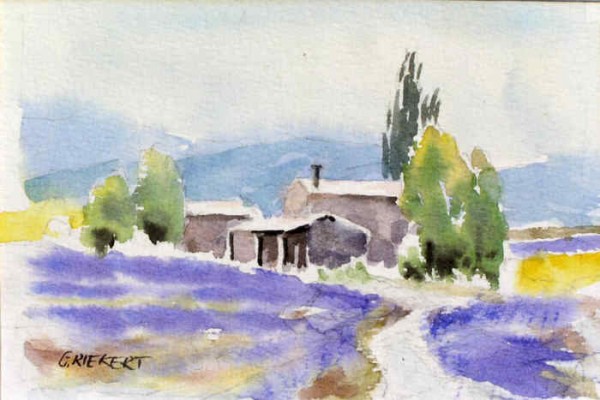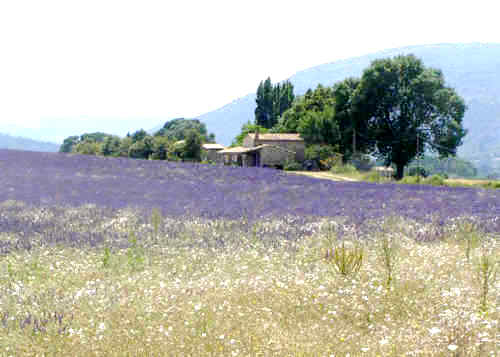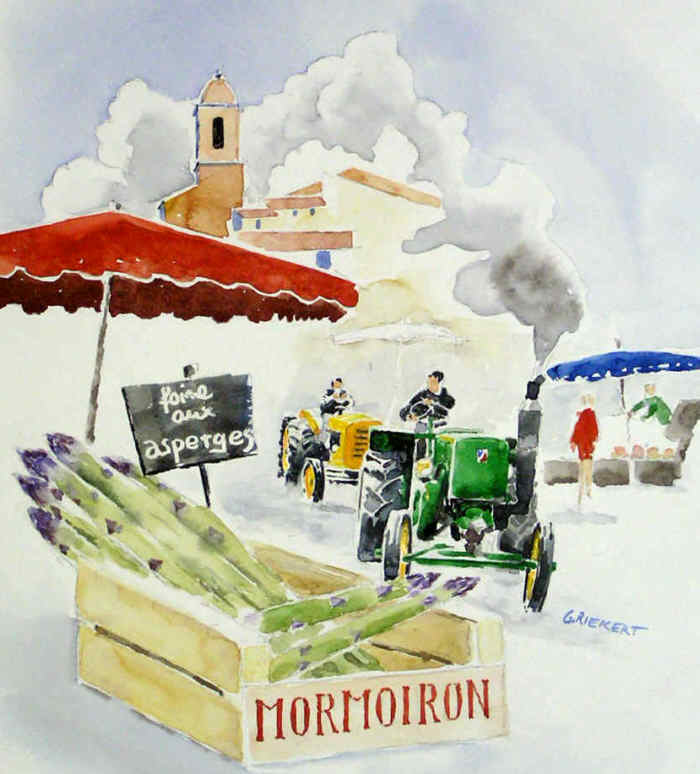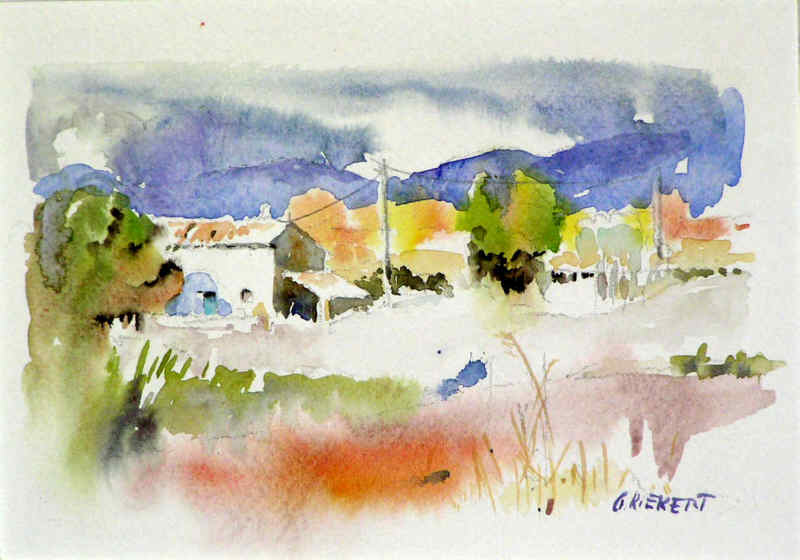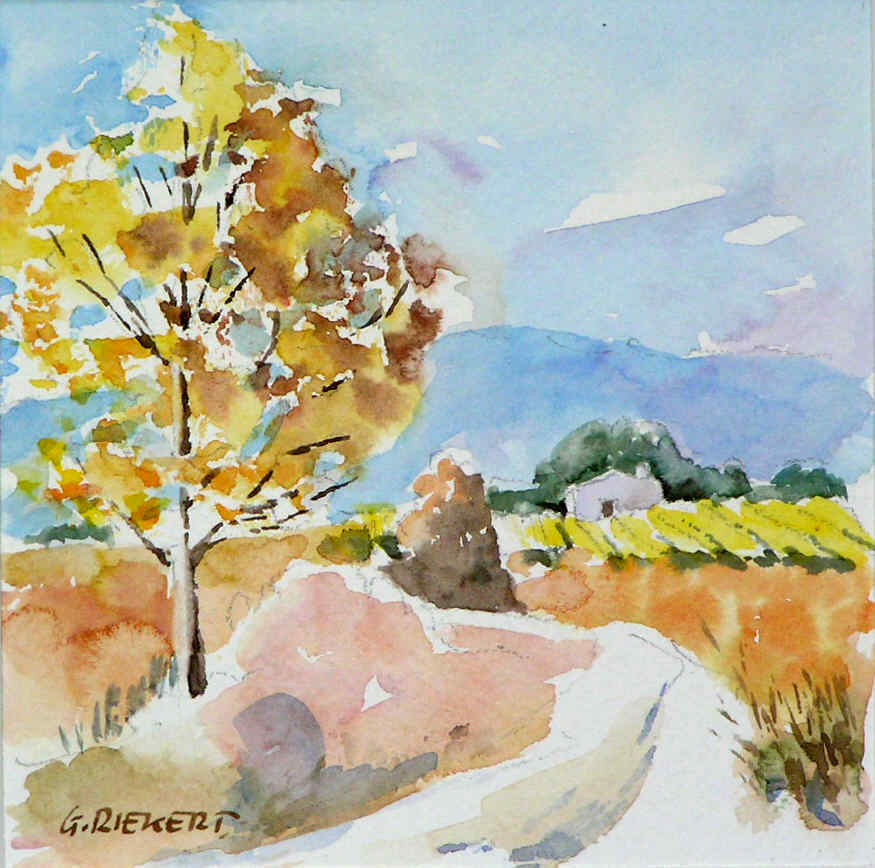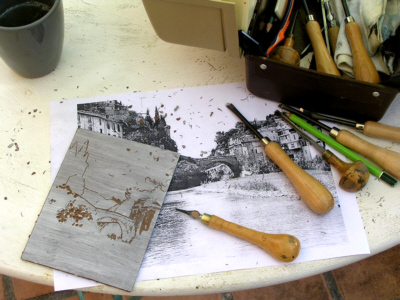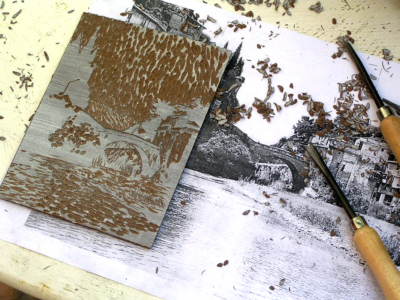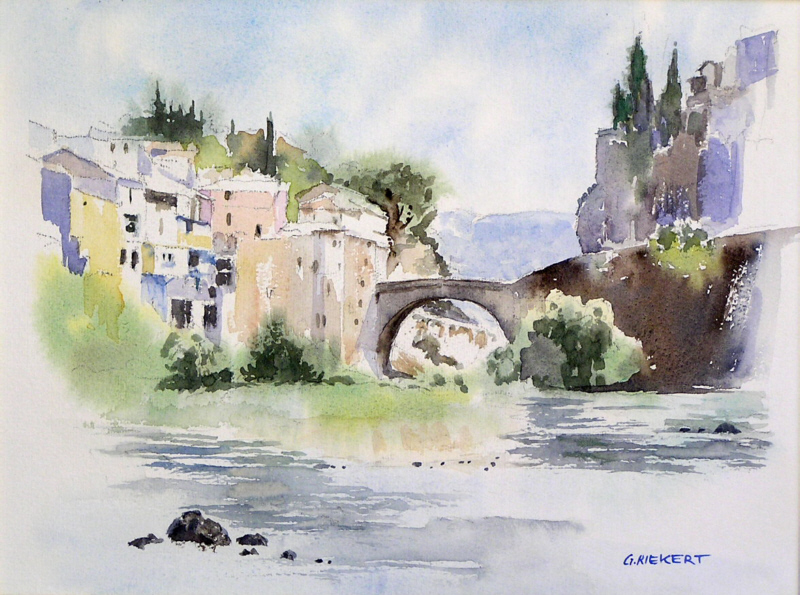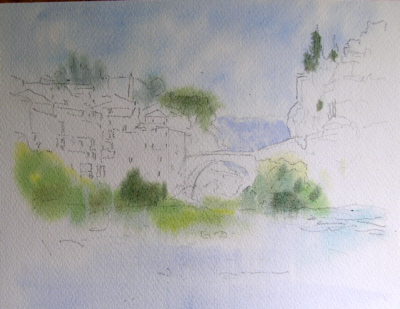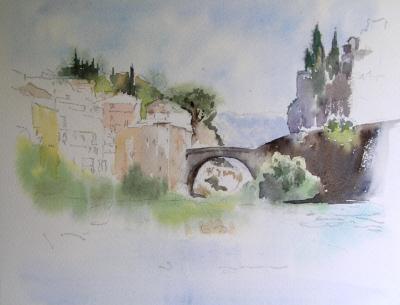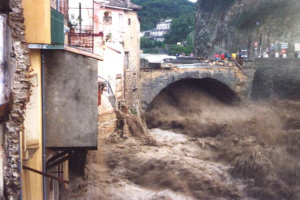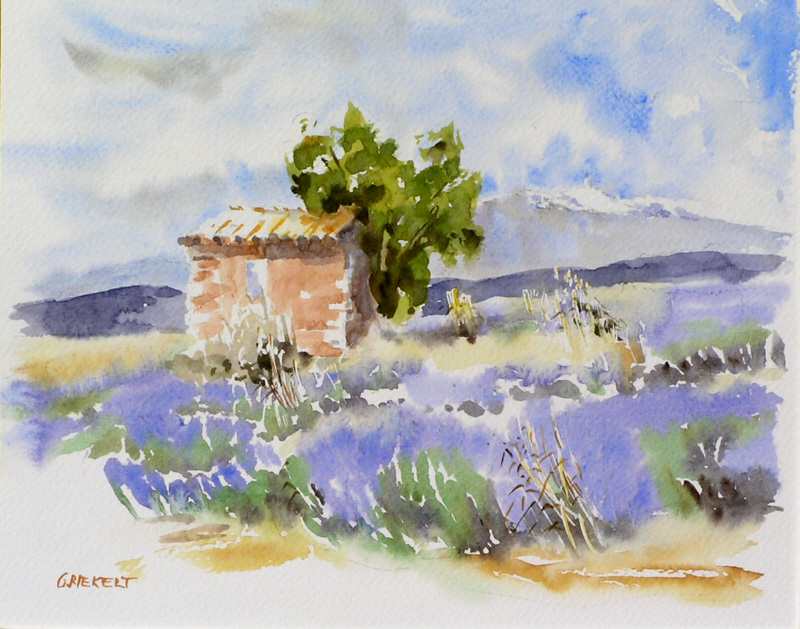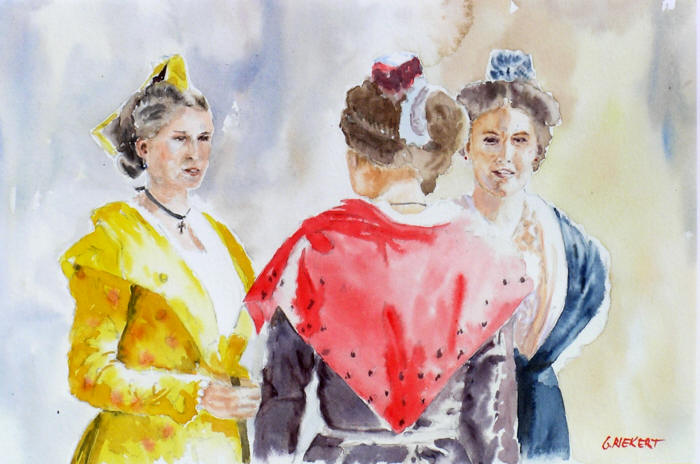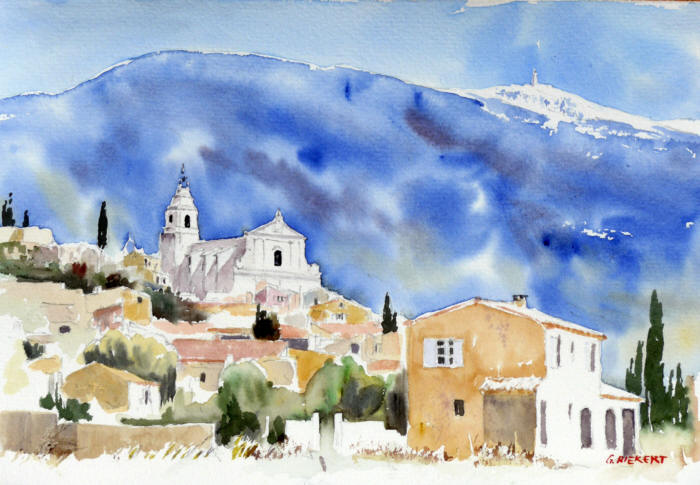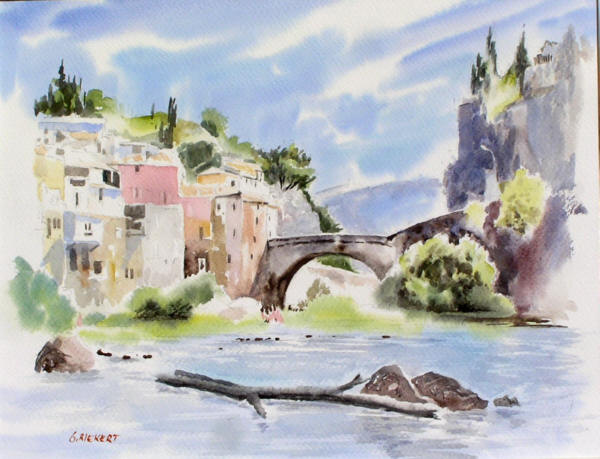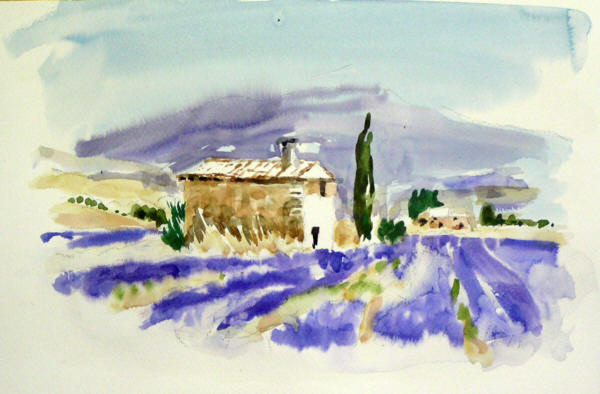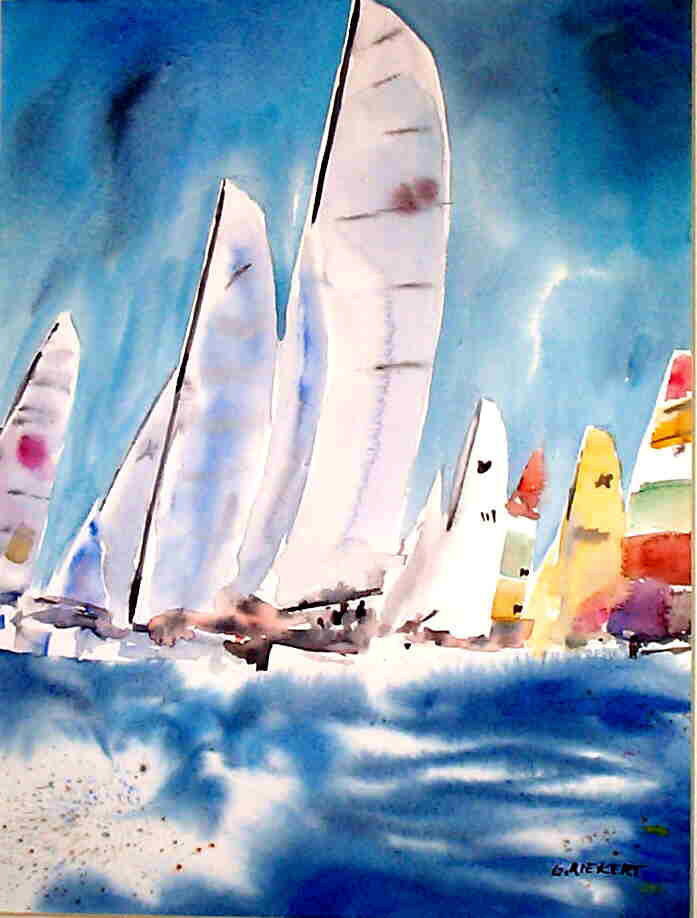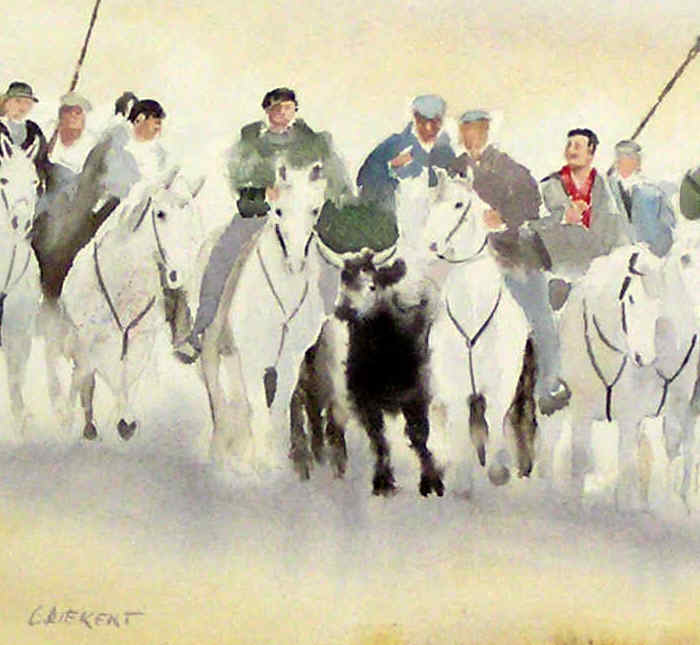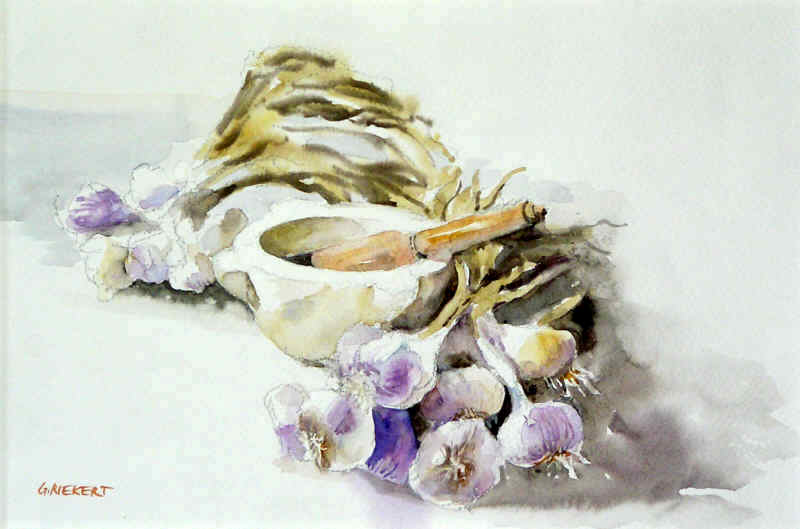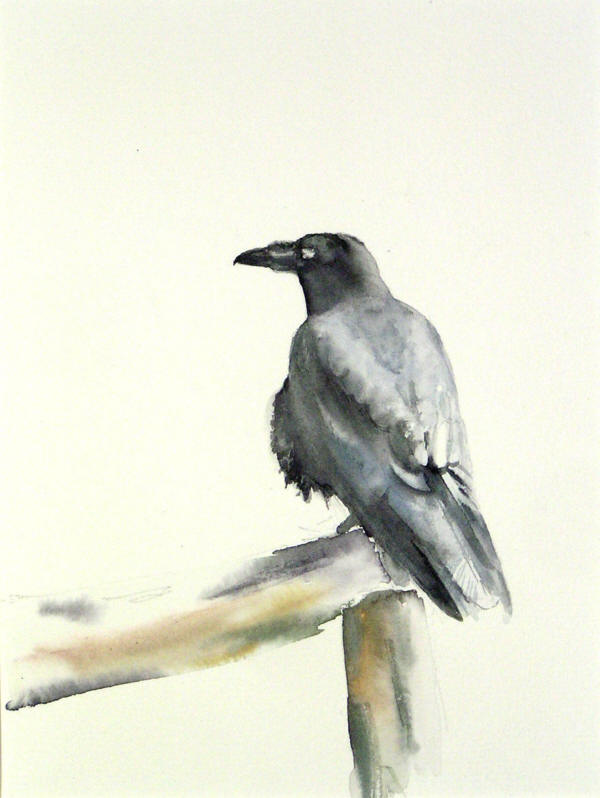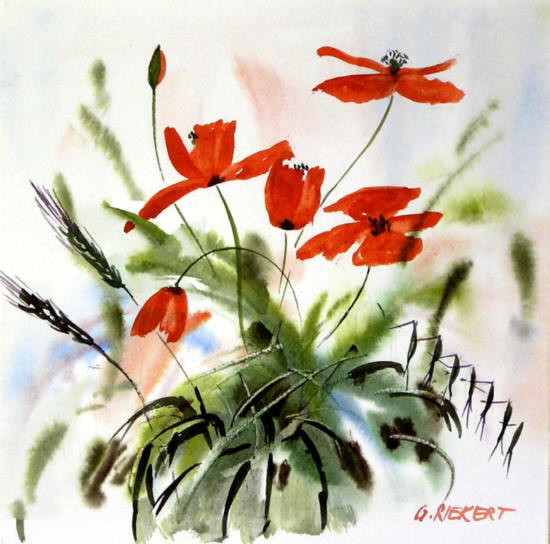Interpretation
10 July, 2011
- Interpréter un sujet est la chose la plus importante dans la création d’une peinture. Copier ce qui est devant nous – en nature ou en photo – n’a jamais donné une bonne peinture. Et pourtant, si on veut exprimer l’émotion qu’on ressent il faut essayer de capter les plus de détails (ou d’informations) possible … en gardant finalement que l’essentiel.
- To interpret a subject is the most important thing when you are creating a painting. You never will get a good painting if you copy what you see (from life or photo). But if you want to transmit your emotion, try to register as many details (or information) as possible … to keep finally only the essential.
- Die Interpretation eines Motivs ist für mich das Wichtigste bei der Kreation eines Aquarells. Nur abzumalen, was man vor sich sieht – sei es nun nach der Natur oder vom Foto – hat noch nie ein gutes Bild ergeben. Und dennoch, will man das Gefühl ausdrücken, das man beim Betrachten empfindet, muss man versuchen, soviel Details (oder Informationen) wie möglich zu registrieren … um dann schließlich nur die wesentlichen zu verwenden.
Foire aux asperges
11 April, 2011
aquarelle – watercolor , Montval 300 g/m²
- Rendez-vous dans une petite semaine à la foire aux asperges dimanche le 17 avril à Mormoiron. Au programme également: l’exposition de vieux tracteurs et un marché aux puces.
- See you at the annual asparagus fair next Sunday 17th April at Mormoiron with its classic tractor show and flea-market.
- Jetzt vormerken: der traditionelle Spargelmarkt am nächsten Sonntag 17. April in Mormoiron. Auf dem Programm wie gehabt: Ausstellung von Oldtimer-Traktoren und Flohmarkt.
fin d’automne
04 December, 2010
aquarelle, watercolor, Fabriano 300 g/m²
- Dernières couleurs d’automne avant que la neige (hier on a reçu les premiers flocons) va couvrir vignes et cerisiers.
- Last colours of autumn before snow (yesterday we got the very first snowflakes) will cover vineyards and cherry trees.
- Letzte Herbstfarben bevor der Schnee (gestern fielen hier die ersten Flocken) Weinberge und Kirschbäume zudeckt.
aquarelle, watercolor, Fabriano 300 g/m²
le pont romain, Vaison la Romaine
14 October, 2010
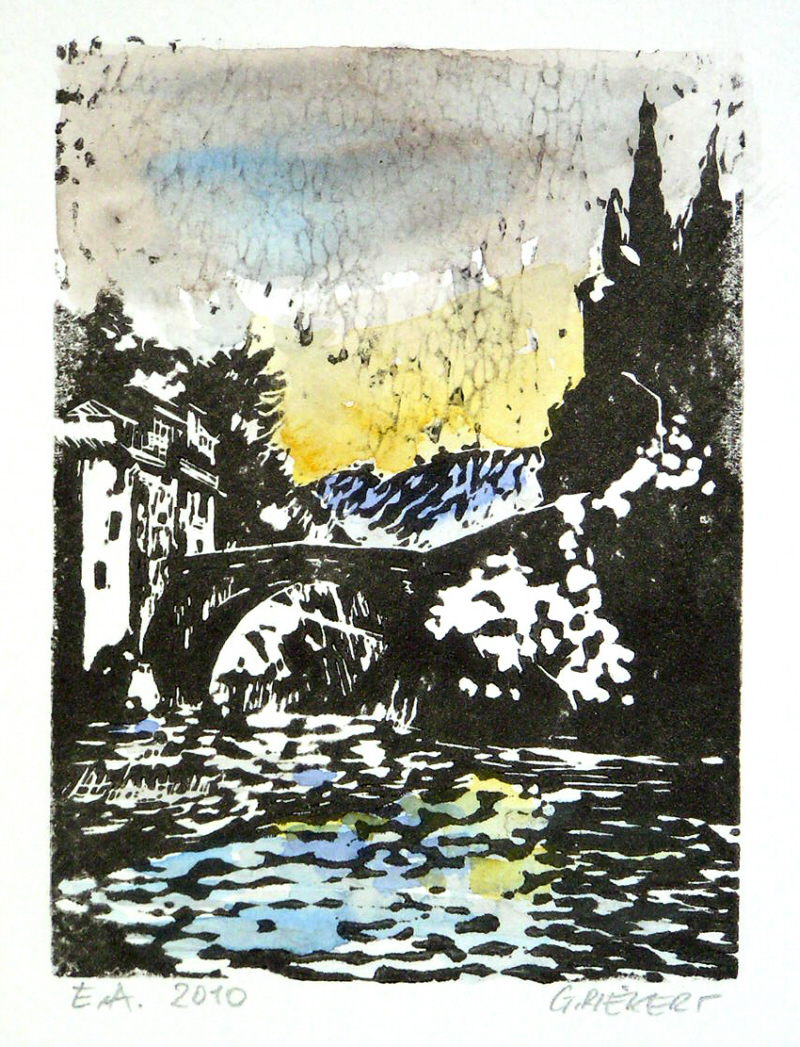 Pont romain Vaison la Romaine, linogravure aquarellée, 18 x 13 cm
Pont romain Vaison la Romaine, linogravure aquarellée, 18 x 13 cm
- Pour faire une gravure il faut inverser l’image. La plaque est couverte d’une fine couche de gouache blanche. Une copie noir et blanc du motif est très utile pour vérifier l’image.
- You have to cut the the linoplate mirror inverted. A thin layer of white gouache is useful to draw on the brown lino plate. I am using an inverted black and white copy of the image to control the drawing.
- Der Druckstock muss spiegelbildlich geschnitten werden. Man überzieht die braune Platte mit weißer Deckfarbe (Gouache), um die Zeichnung besser zu sehen. Eine gespiegelte schwarz-weiß Kopie hilft beim kontrollieren der Linoleumplatte.
Vaison la Romaine
15 September, 2010
aquarelle – watercolor, papier Fabriano 300 g/m², 22 x 29 cm
peinture pas à pas – painting step by step – Schritt für Schritt:
- Ici l’Ouvèze coule tranquillement sous le pont gallo-romain de Vaison la Romaine mais elle n’a pas toujours été si calme (voir photo) depuis la construction du pont il y a presque deux siècles.
- The river Ouvèze runs quietly through the town of Vaison la Romaine crossed by the gallo-roman bridge. But it has not been always so peaceful (see figure) since the bridge has been constructed almost two thousand years ago.
- Die Ouvèze fließt beschaulich unter der gallo-romanischen Brücke von Vaison la Romaine. Aber sie war nicht immer so friedlich (siehe Bild) seit der Erbauung der Brücke von fast zweitausend Jahren.
Source : Direction régionale de l’environnement Languedoc-Roussillon
